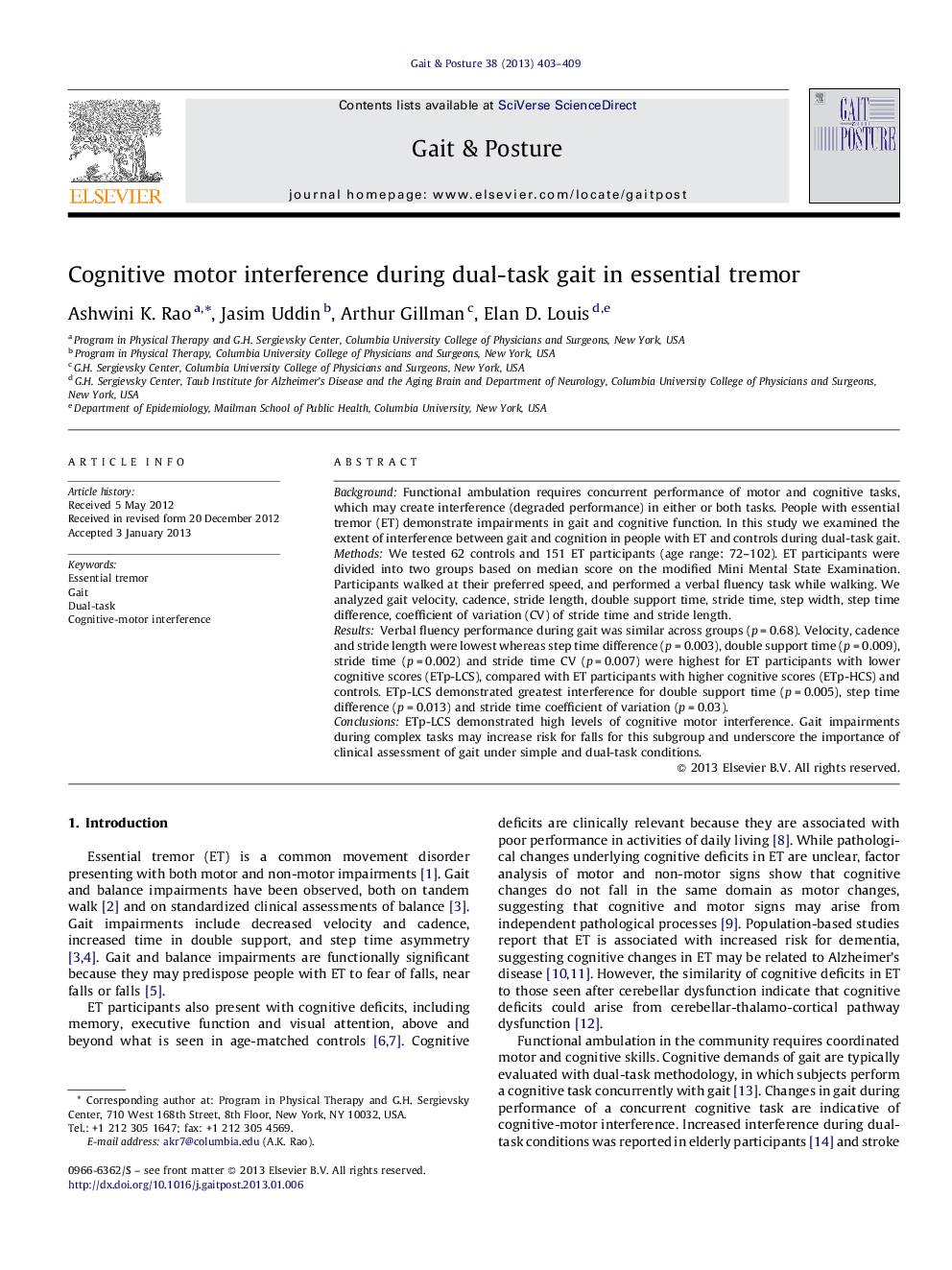| Article ID | Journal | Published Year | Pages | File Type |
|---|---|---|---|---|
| 6206607 | Gait & Posture | 2013 | 7 Pages |
BackgroundFunctional ambulation requires concurrent performance of motor and cognitive tasks, which may create interference (degraded performance) in either or both tasks. People with essential tremor (ET) demonstrate impairments in gait and cognitive function. In this study we examined the extent of interference between gait and cognition in people with ET and controls during dual-task gait.MethodsWe tested 62 controls and 151 ET participants (age range: 72-102). ET participants were divided into two groups based on median score on the modified Mini Mental State Examination. Participants walked at their preferred speed, and performed a verbal fluency task while walking. We analyzed gait velocity, cadence, stride length, double support time, stride time, step width, step time difference, coefficient of variation (CV) of stride time and stride length.ResultsVerbal fluency performance during gait was similar across groups (p = 0.68). Velocity, cadence and stride length were lowest whereas step time difference (p = 0.003), double support time (p = 0.009), stride time (p = 0.002) and stride time CV (p = 0.007) were highest for ET participants with lower cognitive scores (ETp-LCS), compared with ET participants with higher cognitive scores (ETp-HCS) and controls. ETp-LCS demonstrated greatest interference for double support time (p = 0.005), step time difference (p = 0.013) and stride time coefficient of variation (p = 0.03).ConclusionsETp-LCS demonstrated high levels of cognitive motor interference. Gait impairments during complex tasks may increase risk for falls for this subgroup and underscore the importance of clinical assessment of gait under simple and dual-task conditions.
⺠We examined if performance of a cognitive task (verbal fluency) during walking produced gait impairments (i.e., cognitive-motor interference) in ET participants and controls. ⺠No differences were seen in the performance of the cognitive task. ⺠ET participants with low scores on a cognitive test demonstrated the highest interference, particularly for double support time, step time difference and stride time variability. ⺠Clinical assessment of gait in ET participants should include testing under simple and dual-task conditions.
